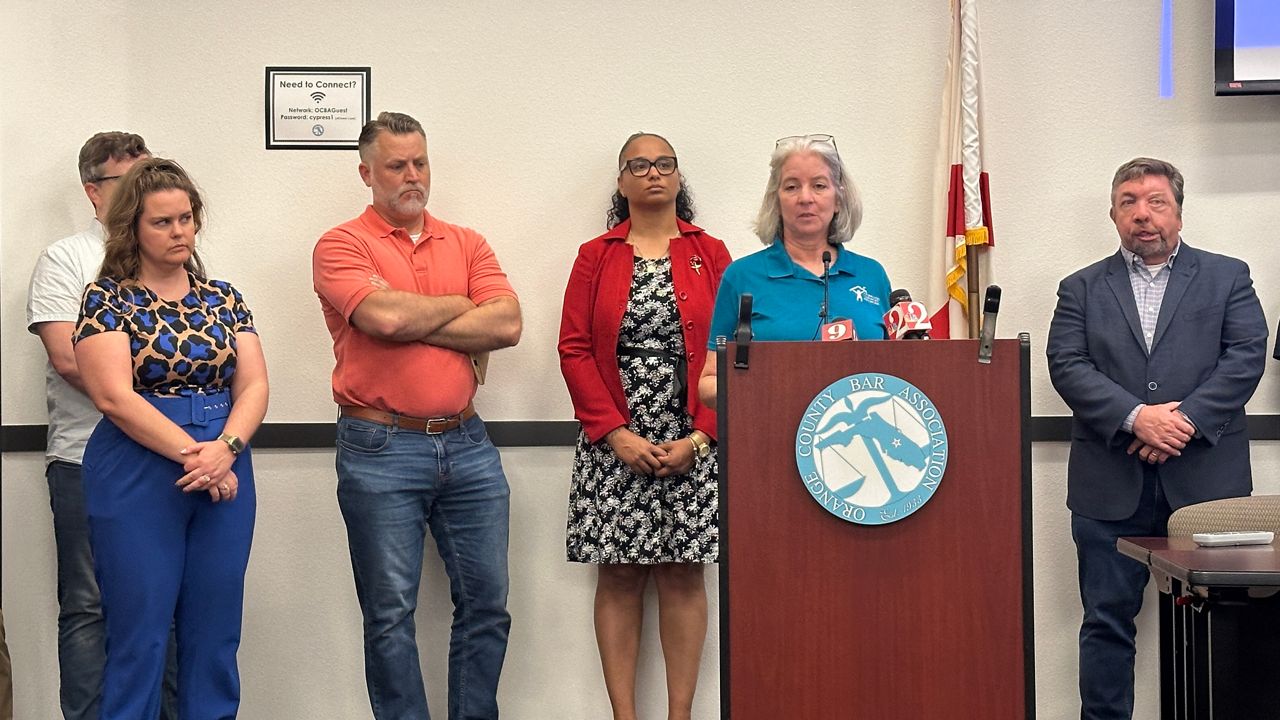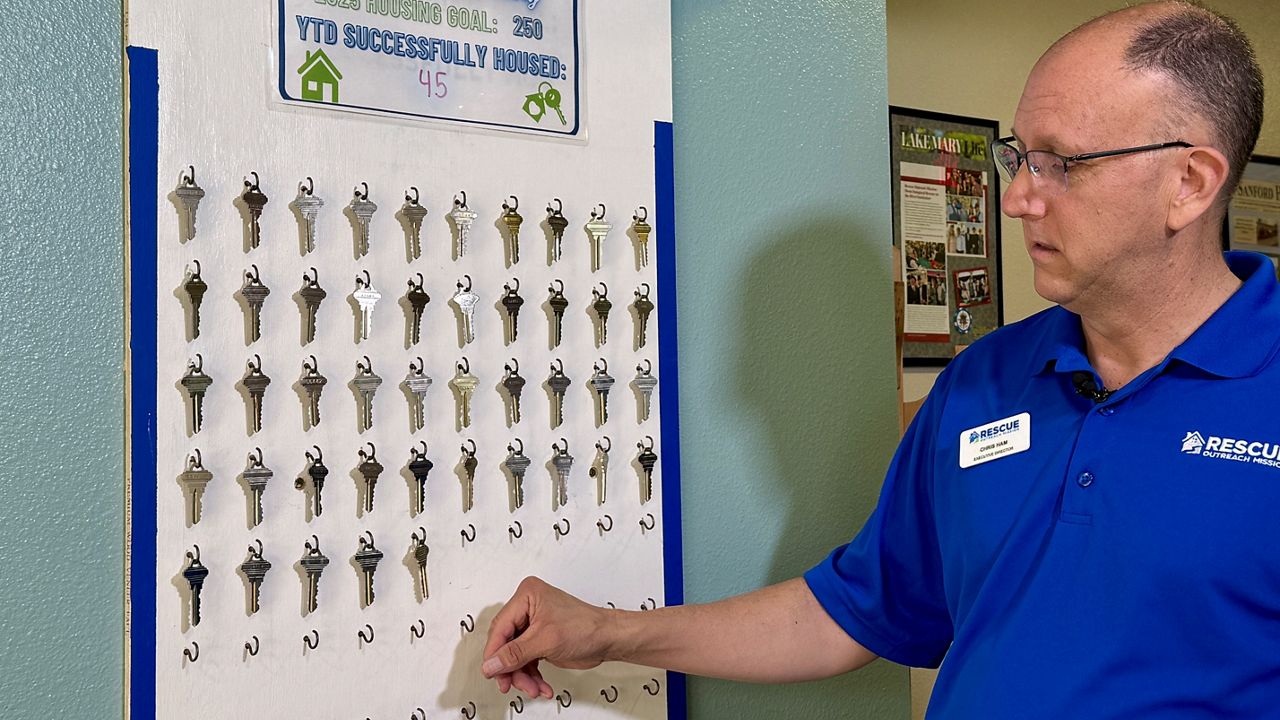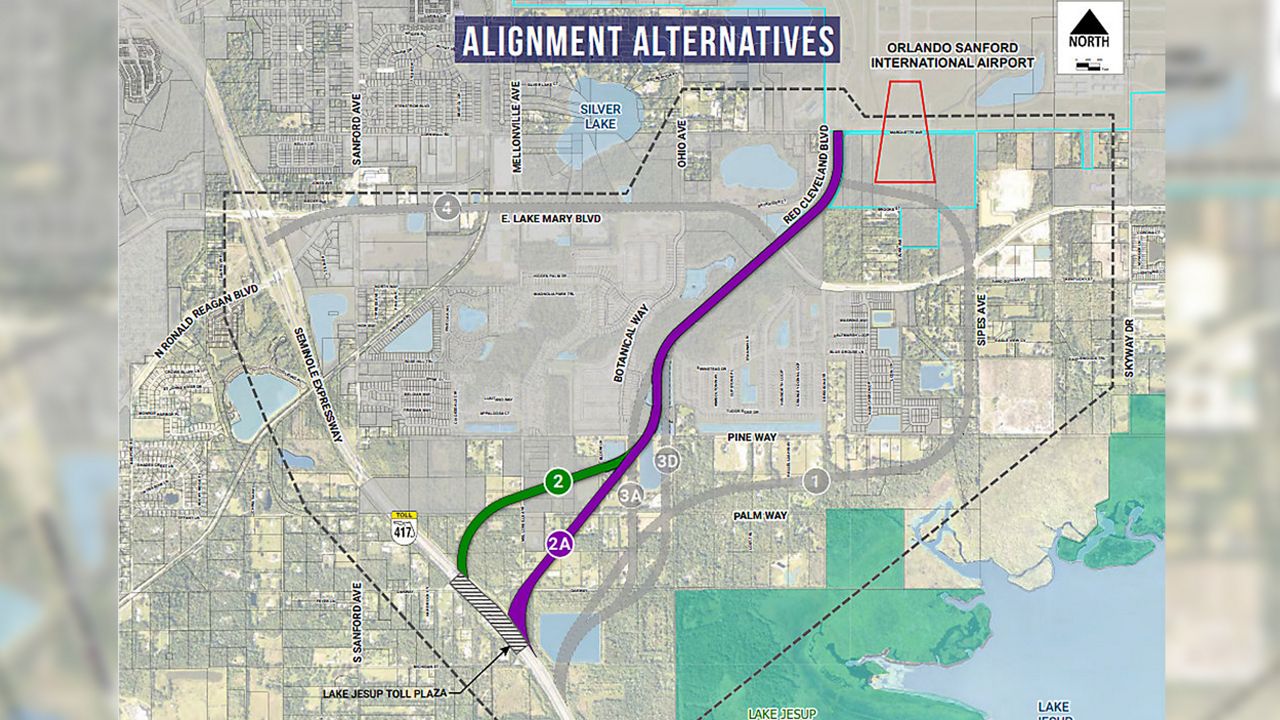SEMINOLE COUNTY, Fla. — Seminole County discussed 1,4-dioxane at Tuesday's board meeting, according to officials.
The chemical, which is potentially carcinogenic, has been found in local water sources.
What You Need To Know
- Documents from the Florida Department of Health (FDOH) and Florida Environmental Protection Agency (EPA) indicate the presence of 1,4-dioxane goes back many years
- Following a four-part series from Spectrum News 13 partners at the Orlando Sentinel, the topic has bubbled to the surface and is now on residents' radars
- Officials with the city of Sanford, as well as Seminole County, say their water meets guidelines and is safe to drink
- MORE: Residents have questions about what's in their water
The discussion included motion by Seminole County Board of County Commissioners Chairman Amy Lockhart to write a letter to ask the Environmental Protection Agency for further guidelines related to 1,4 Dioxane.
Despite the fact that Seminole County’s water system is currently testing at safe levels based on guidance from the EPA, some commissioners want to ensure that policies are in place to keep the public informed on contaminants moving forward.
According to the Orlando Sentinel, some commissioners had been left in the dark, uninformed about the chemical prior to the Sentinel’s reporting. While the chemical is testing at lower levels now, Seminole County officials say that water from one facility tested at higher than recommended leaves in 2013.
“I really would like to stop looking out the rearview mirror, and start looking out the windshield,” said Commissioner Andria Herr. “From my perspective, it’s about time being spent on making sure our infrastructure accommodates whatever it is that the pollutants are of today, the past, and what comes in the future.”
It was revealed during the meeting that 1,4 dioxane reached levels in the water that needed to be reported back in April 2016. Since then, it has always stayed below the health advisory level and is frequently half that. Commissioner Lee Constantine says the fact that this is only just coming up now is an issue with transparency when it comes to reporting water quality.
"We need to ensure clean water for our citizens. We need to swiftly and aggressively take action on things we’re doing. And at the same time, we need to ensure that staff-wise this doesn’t happen and knowledge is forthcoming all the way to the top, so our top can make decisions," Constantine said.
Documents from the Florida Department of Health (FDOH) indicate 1,4-dioxane has been found in groundwater going as far back as 2001. Assessments from FDOH, as well as the Florida Environmental Agency, suggest the source was the old Siemens plant, which was located on Rinehart Road in Lake Mary.
In 2015 and 2016, contractors sampled the water in Lake Mary. They found in some instances 1,4-dioxane was found at more than three times the recommended level.
However, in a 2016 health assessment by FDOH, an assessor found that even at these high levels, they believed the water in Lake Mary was safe to drink.
"Ingesting water with the highest levels of 1,4-dioxane for 33 years would cause, at most, an ‘extremely low’ increased risk of cancer,” wrote health assessor Deborah Tipton.
In 2015 and 2016, water was also measured from sources in Seminole County. According to FDOH, the water tested for 1,4-dioxane at less than 0.28 micrograms per liter. This is less than the current guidelines from the Florida Department of Health (DOH), which is 0.35 micrograms per liter.
Back in January, the Sanford City Commission listed 1,4-dioxane as a topic at their own board meeting.
“Water quality matters in reference to the 1,4-dioxane chemical technical and regulatory issues relating to actions of the Florida Department of Environmental Protection and responsible third parties; authorization to initiate administrative and other potentially necessary proceedings,” read the item on the agenda.
Though that evening's discussion was mostly focused on the city’s failing wastewater vacuum system, unrelated to 1,4-dioxane. The meeting was also shrouded with tension, with news of the utility director’s resignation following just a day later.
However, following a report from the Orlando Sentinel, many residents say they were unaware of the topic of 1,4-dioxane entirely.
Officials with both the city of Sanford and Seminole County say their water currently meets guidelines and is safe to drink.
The city of Sanford put a release on 1,4-dioxane on its website. The page includes the past three water quality reports, though none specifically detail levels of 1,4-dioxane.
County leaders also discussed PFA's, which is classified as a forever chemical, and they will be asking the consultants to take a look if there is a problem there as well. The consultants plan come back with their recommendations in late october.









